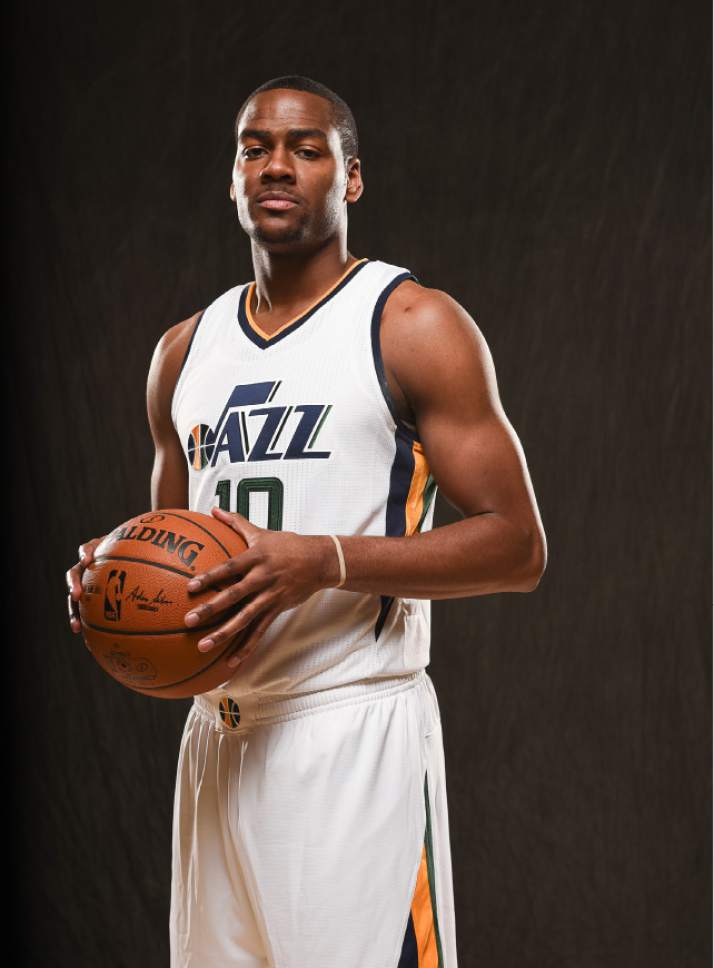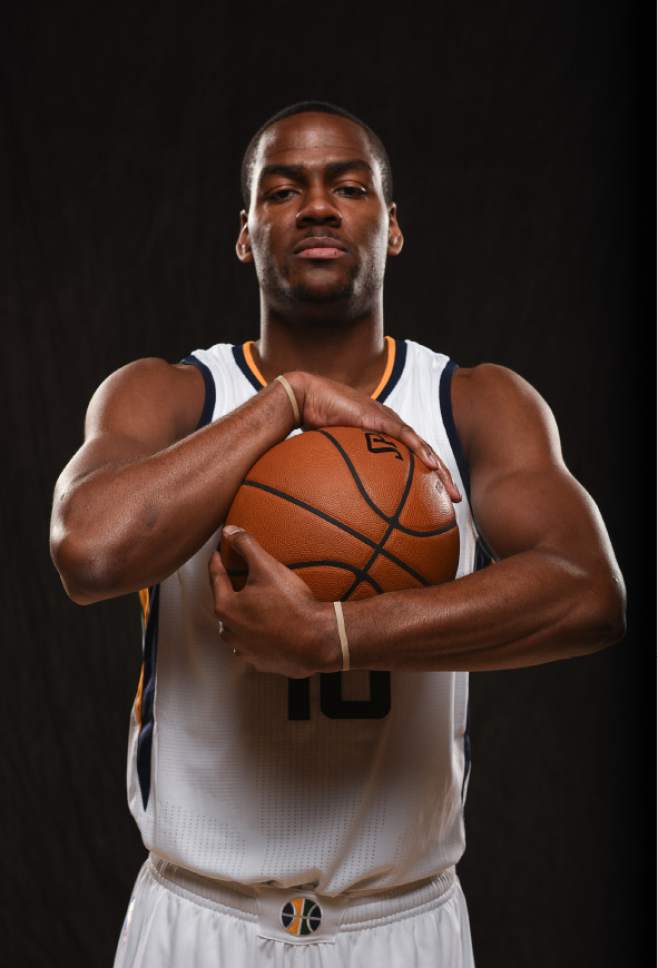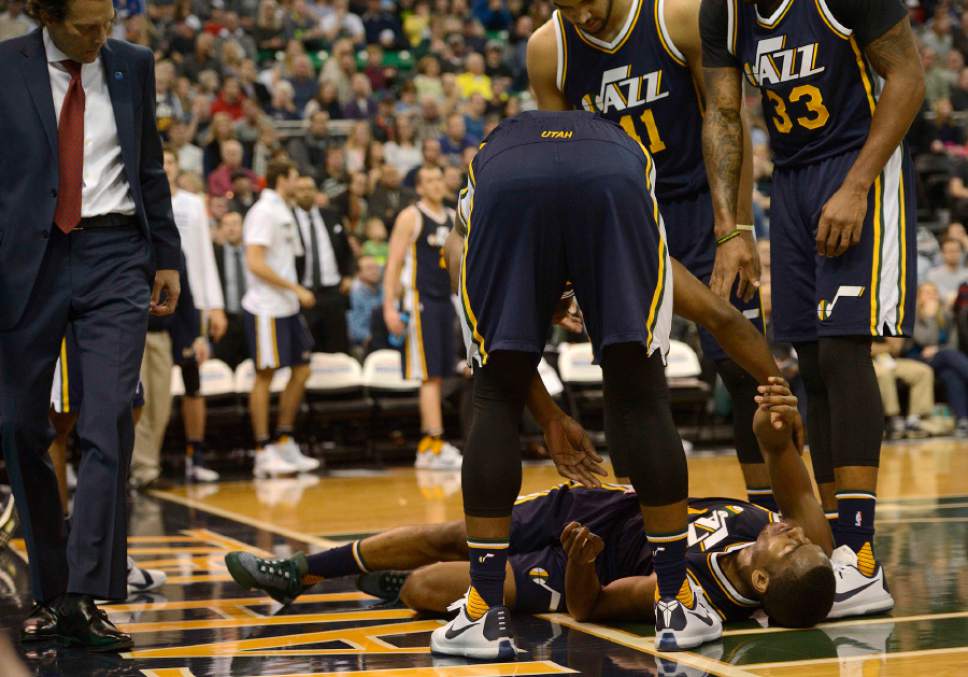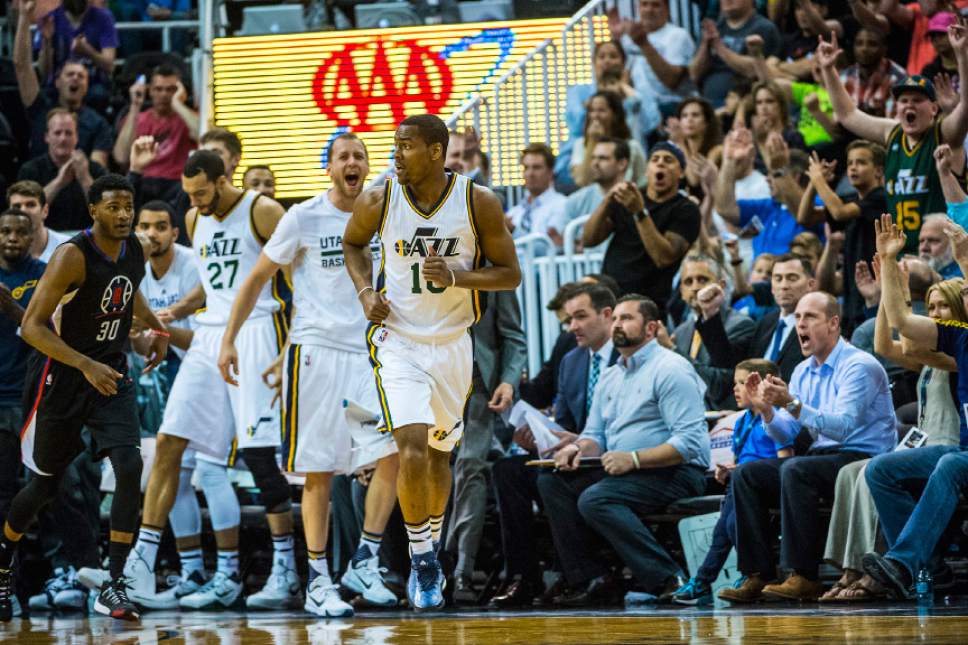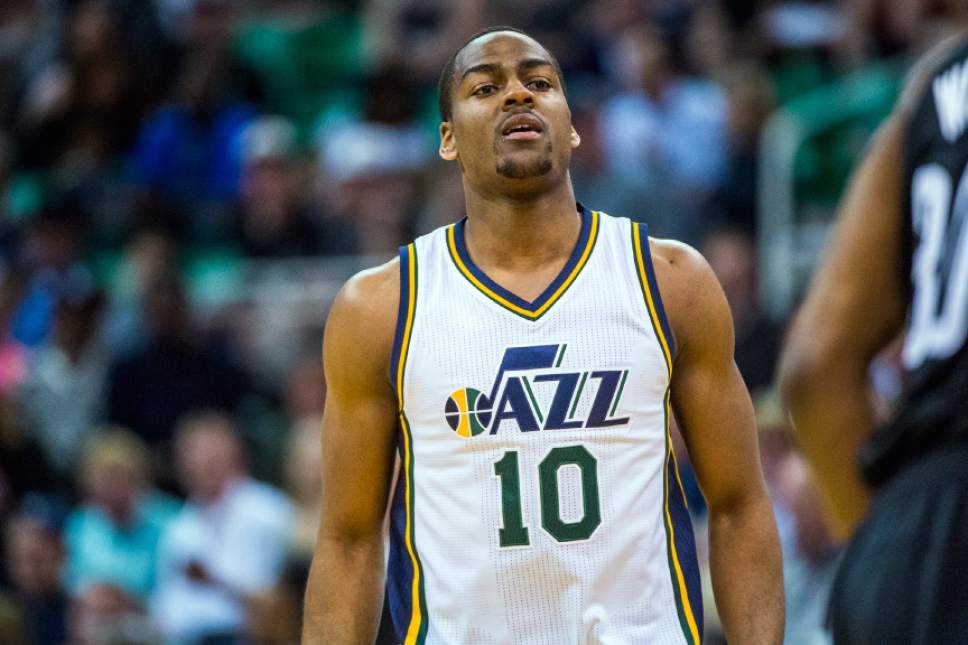This is an archived article that was published on sltrib.com in 2017, and information in the article may be outdated. It is provided only for personal research purposes and may not be reprinted.
Even if he didn't play in Tuesday's loss at Boston as a precautionary measure, Alec Burks' postgame routine was taken with the care of someone who played 35 difficult minutes.
His left ankle dipped in a bucket full of ice at his stall, the Jazz shooting guard said he knew going in he wasn't going to play because it was the second night of a back-to-back — even though he'd logged only three minutes the previous night in Brooklyn.
For the Jazz and Burks, it's all a part of a tedious and at times physically agonizing process.
Burks made his official return to the hardwood in Monday's win over the Nets. He played three minutes, missed one field goal and recorded a turnover.
That doesn't mean all the questions have been answered. What kind of player will he be, after missing most of two years with injury? Where does he fit on a Jazz team that has many more bench options now than before he got hurt last season? Most importantly, is he the same athlete he was previously?
"You obviously have some compassion for the situation," Jazz head coach Quin Snyder said. "But as much as I want to play Alec and let him play his way through his return, it's going to be a long process. We have a lot of options on the wing. And Alec knows that and he's great about that."
Burks has a role to play for the Jazz when healthy. At 100 percent, he's arguably Utah's best player in transition, and its most dynamic athlete. He's one of the better rebounding guards in the NBA and one of the better guards in the league at getting to the free-throw line. Those are all attributes the Jazz can use — even with the depth it possesses.
Therein lies the rub. Burks essentially hasn't played much meaningful basketball in two years. December of 2014 brought a shoulder surgery. December of 2015 delivered an ankle surgery, after a fall at the hands of Los Angeles Clipper forward Paul Pierce.
Yes, Burks made a momentary return at the end of last season. But he clearly wasn't himself. His athleticism was sapped. He couldn't get to the basket off the dribble. He was reduced to a standstill shooter on the wing.
"I thought I was ready, but I wasn't," he said. "I played well my first game back, and that was because of adrenaline. But I knew pretty quickly, I wasn't right. I knew I needed to get myself healthy."
So Burks and the Jazz took the long route. There was another ankle surgery in June, and the thought was he'd be ready to go by training camp. But camp started, and then the preseason started, and then the regular season started, and there was no Burks.
Then there was another surgery, because of lingering pain. The process was frustrating for many involved. But Burks knew he tried to return too quickly last April. Neither he, nor the Jazz, wanted to make the same mistake.
"It was frustrating on some levels because I wanted to play," Burks said. "But I feel good now. I feel strong, and I wanted to make sure that I felt like I was close to 100 percent."
The conundrum for Burks is his style of play. He attacks the basket, throws himself into defenders and can make impossible and contorting shots at the rim. It's what makes him who he is.
It's also how he's gotten injured — twice.
So, Burks knows he walks a fine line. If he plays more carefully, he runs the risk of not being the unique player whose strengths the Jazz can utilie as midseason nears. But if he retains his previous aggression, he remains susceptible to injury.
"I'm not going to change who I am fundamentally," Burks said. "I've played this way my entire career and I've only gotten hurt twice. I know there are spots where I can be a little more careful, but I've got to be who I am."
Mentally, Burks says he's back, which is a big step. He's not going to shy away from contact. He's not afraid of being undercut in the air, which is what Pierce did to him, intentional or not.
As the road trip progresses for the Jazz, Burks will continue to be given small doses of minutes.
The Jazz will use him at shooting guard off the bench. In smaller lineups, he can play with other wings. In bigger lineups, he can even play a bit of point guard.
But he's back and healthy. That's what the Jazz want to see. Fitting in is the start of another process.
A long, slow process.
Twitter: @tribjazz About Alec Burks
• Missed most of the 2014-2015 season with shoulder surgery and much of the 2015-2016 season with ankle surgery.
• Burks is one of the few players remaining in the franchise that played for the Jazz when Ty Corbin was the coach. He was taken in the 2011 draft.
• Burks was Utah's sixth man last season and this season will be a part of a wing rotation with Joe Ingles, Joe Johnson, Rodney Hood and Gordon Hayward. —
Jazz at Raptors
P At Air Canada Centre, Toronto
Tipoff • Thursday, 5:30 p.m. MT
TV • ROOT
Radio • 97.5 FM, 1280 AM
About the Jazz • They've struggled to contain opposing guards in George Hill's absences, including surrendering 36 points to Toronto's Kyle Lowry last month in Salt Lake City. … Hill remains in the NBA's concussion protocol after being elbowed in the face on New Year's Eve. … Rudy Gobert shot 77.8 percent from the field in December, the highest field-goal percentage in a month (with a minimum of 60 attempts) since Wilt Chamberlain in March 1973.
About the Raptors • Coming off a 110-82 loss to the Spurs in San Antonio on Tuesday. … Kyle Lowry and DeMar DeRozan are one of the league's top scoring backcourts, combining to average 49.7 points per game. … Former Utah star Jakob Poeltl played a season-high 26 minutes on Tuesday, scoring four points and grabbing nine rebounds.



